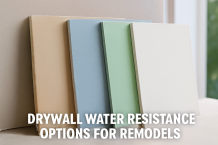Water Damage and Mold Insurance Claims San Diego CA
Welcome to the ultimate guide to water damage and mold removal insurance claims. Dealing with water damage and mold can be a nightmare for homeowners, not to mention the financial burden it can create. That’s where insurance comes in. Understanding how insurance claims work for water damage and mold removal is essential to ensure you receive the compensation you deserve.
In this comprehensive guide, we will walk you through the entire process, from filing a claim to navigating the insurance company’s requirements and maximizing your reimbursement. We’ll cover everything you need to know, from documenting the damage and understanding policy coverage to dealing with adjusters and contractors.
Whether you’re dealing with a burst pipe, flood, or mold infestation, this guide will equip you with the knowledge and tools to navigate the complex world of insurance claims. We’ll provide expert tips and insights to help you avoid common pitfalls and ensure a smooth claims process.
Don’t let water damage and mold ruin your home and your finances. Get the information you need to protect yourself and your property. Let’s dive in!

Understanding Water Damage and Mold Removal Insurance Claims
Water damage and mold can wreak havoc on your home, causing structural damage and health issues. This is why it’s crucial to have insurance coverage that includes protection against these perils. However, understanding what types of water damage are covered by insurance is the first step in the claims process.
Different types of water damage can occur in a home, such as burst pipes, leaks, flooding, or sewer backups. The coverage for each type of water damage may vary depending on your insurance policy. It’s important to review your policy documents to understand the specifics of your coverage.
Mold is another common issue that can result from water damage. While some insurance policies may cover mold removal, others may exclude it or have limitations on the coverage. Understanding your policy’s stance on mold is crucial to avoid any surprises when filing a claim.
It’s also important to note that insurance companies may require specific steps to be taken to prevent further damage. For example, if you discover a leak, your policy may require you to mitigate the damage by promptly hiring a professional to fix the issue. Failure to follow these requirements could result in a denied claim. Understanding the terms and conditions of your policy will help you navigate the claims process smoothly.
Types of Water Damage Covered by Insurance
Water damage can occur in various ways, and the coverage provided by insurance policies can vary. It’s essential to understand the different types of water damage that are typically covered by insurance. This knowledge will help you determine whether your particular situation is eligible for a claim.
1. Flood Damage: Flood damage is caused by rising water from external sources, such as heavy rain, overflowing rivers, or storm surges. Most standard homeowners’ insurance policies do not cover flood damage. However, you can purchase a separate flood insurance policy through the National Flood Insurance Program (NFIP) or private insurers.
2. Water Damage from Burst Pipes: Burst pipes can cause significant water damage to your home. Fortunately, most homeowners’ insurance policies cover this type of damage. However, it’s crucial to review your policy carefully to understand the extent of the coverage and any limitations.
3. Leaking Plumbing: A leaking pipe or plumbing fixture can lead to water damage over time. Whether your insurance covers this type of damage depends on the cause of the leak and the specific policy wording. Sudden and accidental leaks are more likely to be covered than gradual or neglected ones.
4. Sewer Backup: Sewer backups can cause extensive damage to your property. Some homeowners’ insurance policies offer coverage for this type of damage, but it’s not always included by default. You may need to add a separate endorsement or rider to your policy for this coverage.
Understanding the types of water damage covered by insurance is crucial when filing a claim. Be sure to review your policy and consult with your insurance agent to determine the coverage specific to your situation.
Mold Removal and Insurance Coverage
Mold is a common issue that can arise from water damage. It can be hazardous to your health and cause significant damage to your property. While insurance policies typically cover water damage, the coverage for mold removal can be more complex.
1. Mold Exclusion: Many insurance policies have a mold exclusion clause, which means they do not cover mold removal or damage caused by mold. However, some policies offer limited coverage for mold remediation under specific circumstances, such as when it results from a covered water damage event.
2. Additional Mold Coverage: Some insurance companies offer additional coverage options for mold removal. These options may be available as endorsements or riders to your existing policy. It’s essential to review your policy or speak with your insurance agent to determine if you have any mold coverage.
3. Prevention and Maintenance: Insurance companies expect homeowners to take reasonable measures to prevent mold growth and perform regular maintenance. Failure to do so may result in denied claims or limited coverage. It’s crucial to address any water damage promptly and take steps to eliminate excess moisture to minimize the risk of mold growth.
Navigating the insurance coverage for mold removal can be challenging. Review your policy carefully and consult with your insurance agent to understand the specific coverage and options available to you.
Water Damage Caused By a Storm
When there is a storm, if water gets into your home, you need to dry up all the wet areas and set up air circulation to help everything dry. Water can come into your house or place of business from roof damage, damaged gutters, or a leaking basement. To prevent additional damage, cover all areas with a tarp. By drying, covering, and dehumidifying all wet areas you can attempt to minimize the chance that mold will form from the water damage. Flooding can happen if a storm causes a river level to rise. Of course, always contact your insurance agent as soon as possible so that you can begin the homeowner’s mold removal insurance or business insurance policy claims process.
Moisture Damage Over Some Time
If you find water or moisture damage that appears to be from a leakage existing for some time, mold might have developed and the chances your claim will be covered are very slim. In this situation, trying to clean up the mold now will spread the mold spores and cause more property damage and increased health risks. Mold is extremely dangerous to your health and you must have a professional restoration expert come to clean up the damage. Obvious damage from flooding can be cleaned up but mold growth isn’t always apparent. Moisture behind drywall can be detected using specialized equipment from a certified disaster restoration contractor. Typically mold removal insurance policies have a cap or limit of what the mold removal insurance company is willing to pay towards mold removal. Prepare to cover at least some of the clean up expenses out of your pocket, that means shopping around on search engines to select a competent disaster restoration company in your area.
Steps to Take After Discovering Water Damage or Mold
Discovering water damage or mold in your home can be distressing, but taking immediate action is crucial to mitigate further damage and make the claims process easier. Here are the essential steps to follow:
1. Ensure Safety: Before entering the affected area, ensure it is safe to do so. Turn off the electricity to prevent any electrical hazards and wear appropriate protective gear.
2. Stop the Source: If the water damage is caused by a burst pipe or plumbing issue, turn off the main water supply to prevent further flooding. If there’s a sewer backup, avoid using any plumbing fixtures until the issue is resolved.
3. Document the Damage: Take photos and videos of the affected areas, documenting the extent of the damage. This evidence will be crucial when filing an insurance claim.
4. Mitigate Further Damage: Take immediate action to prevent further damage. This may include removing standing water, drying out the affected areas, or boarding up damaged windows and doors.
5. Contact Your Insurance Company: Notify your insurance company about the water damage or mold infestation as soon as possible. They will guide you through the claims process and provide instructions on the next steps to take.
Acting quickly and following these steps will help ensure a smoother claims process and increase the likelihood of a successful insurance claim.
Documenting the Damage for an Insurance Claim
When filing an insurance claim for water damage or mold removal, proper documentation is crucial. The more detailed and organized your documentation, the easier it will be to support your claim and maximize your reimbursement. Here are some tips for documenting the damage:
1. Photographs and Videos: Take clear and high-resolution photos and videos of the affected areas from multiple angles. Capture both wide shots to show the overall damage and close-ups to highlight specific areas.
2. Inventory of Damaged Items: Create a detailed inventory of damaged items, including their description, age, and value. If possible, provide receipts or proof of purchase to support your claim.
3. Keep Records: Maintain a record of all communication with your insurance company, including phone calls, emails, and letters. Note down the date, time, and the name of the representative you spoke with.
4. Save Repair and Restoration Receipts: Keep copies of all receipts related to repairs, cleanup, and restoration. These expenses may be eligible for reimbursement under your insurance policy.
Remember to store your documentation in a safe place, such as a digital cloud storage or a physical folder, to ensure it’s easily accessible throughout the claims process.
Filing a water damage or mold removal insurance claim
Filing an insurance claim for water damage or mold removal can be a complex process. It’s essential to understand the requirements and follow the proper procedures to increase your chances of a successful claim. Here’s a step-by-step guide to filing a claim:
1. Notify Your Insurance Company: Contact your insurance company’s claims department to report the water damage or mold infestation. Provide them with all the necessary details, including the date of the incident, a description of the damage, and any supporting documentation.
2. Schedule an Inspection: Your insurance company may send an adjuster to inspect the damage and assess the extent of the loss. Be prepared to provide access to the affected areas and answer any questions they may have.
3. Cooperate with the Claims Process: Work closely with your insurance company and provide any additional information or documentation they request. Be responsive and timely in your communication to avoid any delays in the claims process.
4. Obtain Estimates: Obtain multiple estimates from reputable contractors for the repair and restoration work. Submit these estimates to your insurance company for review and approval.
5. Review the Settlement Offer: Once your insurance company has reviewed all the information and estimates, they will provide you with a settlement offer. Carefully review the offer and consult with your insurance agent or a public adjuster if you feel it’s inadequate.
6. Negotiate if Necessary: If you believe the settlement offer is insufficient, you have the right to negotiate with your insurance company. Provide additional documentation or evidence to support your claim and make a counteroffer if necessary.
Remember to keep copies of all documentation and communication related to your claim. If you encounter any difficulties during the process, don’t hesitate to seek assistance from a professional, such as a public adjuster or an attorney specializing in insurance claims.
Dealing with Insurance Adjusters and the Claims Process
During the claims process, you will likely interact with an insurance adjuster assigned to your case. Their role is to assess the damage, determine the coverage, and help facilitate the claims process. Here are some tips for dealing with insurance adjusters:
1. Be Prepared: Before meeting with the adjuster, gather all the relevant information, documentation, and estimates. Be prepared to answer questions and provide additional information as requested.
2. Be Honest and Accurate: Provide accurate and detailed information about the incident and the damage. Avoid exaggerating or withholding any information, as it may jeopardize your claim.
3. Take Notes: During meetings or phone calls with the adjuster, take notes of the conversation, including the date, time, and key points discussed. This will serve as a record of the interaction.
4. Ask Questions: If you’re unsure about any aspect of the claims process or the coverage, don’t hesitate to ask the adjuster for clarification. Understanding the process will help you make informed decisions.
5. Don’t Rush: Take your time to review the settlement offer and consult with professionals if needed. Don’t feel pressured to accept an offer that you believe is unfair or inadequate.
Maintaining open and respectful communication with the insurance adjuster will help ensure a smoother claims process. However, if you encounter any difficulties or feel that your claim is being mishandled, consider seeking assistance from a public adjuster or an attorney.

Common Challenges with Water Damage and Mold Removal Insurance Claims
While insurance claims for water damage and mold removal are essential for homeowners, they can also be complex and challenging. Here are some common challenges you may encounter during the claims process:
1. Policy Exclusions and Limitations: Insurance policies often have exclusions and limitations that may impact your coverage. It’s crucial to review your policy carefully and understand what is covered and what is not.
2. Disputes over Cause and Pre-Existing Damage: Insurance companies may dispute the cause of the water damage or mold infestation. They may also argue that the damage existed before the policy coverage began, leading to denied or limited claims.
3. Delays in Claims Processing: Claims processing can be time-consuming, with multiple steps and inspections involved. Delays in the process can be frustrating, especially when you need immediate repairs or restoration.
4. Inadequate Settlement Offers: Insurance companies may offer settlement amounts that don’t fully cover the cost of repairs or restoration. It’s essential to review the offer carefully and seek professional assistance if needed.
5. Claim Denials: In some cases, insurance companies may deny a claim altogether. This can happen if the damage is not covered by the policy or if there are discrepancies in the documentation or information provided.
Navigating these challenges can be daunting, but with the right knowledge and support, you can overcome them and secure the compensation you deserve.
Tips for Maximizing Your Insurance Claim
When filing an insurance claim for water damage or mold removal, it’s essential to take steps to maximize your reimbursement. Here are some tips to help you get the most out of your claim:
1. Review Your Policy: Familiarize yourself with the terms, coverage, and limitations of your insurance policy. Understanding what is covered and what is not will help you set realistic expectations.
2. Act Quickly: Notify your insurance company as soon as you discover the water damage or mold infestation. Acting promptly can help prevent further damage and demonstrate your commitment to mitigating the loss.
3. Document Everything: Take detailed photos, videos, and inventory of the damage, as well as any repairs or restoration work. Keep records of all communication with your insurance company and contractors involved in the process.
4. Seek Professional Assistance: If you encounter difficulties or feel overwhelmed by the claims process, consider hiring a public adjuster or an attorney specializing in insurance claims. They can provide guidance and advocate on your behalf.
5. Be Persistent: Don’t be afraid to negotiate with your insurance company if you believe the settlement offer is inadequate. Provide additional evidence or documentation to support your claim and insist on a fair resolution.
By following these tips and being proactive throughout the claims process, you can increase your chances of receiving the maximum reimbursement for your water damage or mold removal claim.
Conclusion: Navigating the Insurance Claims Process for Water Damage and Mold Removal
Dealing with water damage and mold infestation can be overwhelming, but understanding the insurance claims process can alleviate some of the stress. This ultimate guide has provided you with valuable insights and expert tips to navigate the complex world of water damage and mold removal insurance claims.
Remember, reviewing your policy, documenting the damage, and following the proper procedures are crucial for a successful claim. If you encounter challenges, don’t hesitate to seek professional assistance from public adjusters or attorneys specializing in insurance claims.
Don’t let water damage and mold ruin your home and your finances. Take control of the situation by arming yourself with the knowledge and tools necessary to protect yourself and your property. With the information provided in this guide, you’re well-equipped to navigate the insurance claims process and maximize your reimbursement.
Now is the time to take action and secure the compensation you deserve. Protect your home, your finances, and your peace of mind.
Contact your homeowner’s insurance company to check if any of the damage is covered by your policy and call a professional disaster restoration company immediately.
10965 Hartley Rd, Santee, CA 92071
(619) 449-9611















Follow Us!